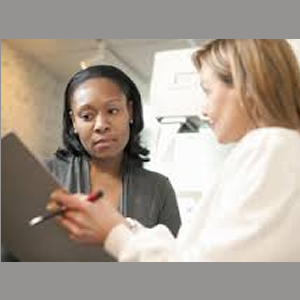You can inherit mutations in the genes known as “BRCA1” or “BRCA2” from either your mother’s or your father’s side of the family. Normally, BRCA1 and BRCA2 function as tumor suppressor genes, producing proteins that help repair any damage to your cells’ genetic information and suppress abnormal cell growth. When a BRCA1 or BRCA2 gene has a mutation, or a “misspelling” in the letters of the genetic code, this repair function is usually lost—increasing the risk for breast, ovarian, and some other cancers.
In some families, multiple cases of breast and/or ovarian cancer cannot be traced back to the BRCA1 or BRCA2 genes. Researchers are now searching for other inherited genetic mutations that may be responsible for increased risk.
Regardless of family history, you also may be considered to be at higher-than-average risk for breast cancer if you:
- Had radiation therapy to the chest for treatment of a past cancer
- Have had previous breast biopsies (examination of surgically removed tissue under a microscope) that detected atypical hyperplasia (fast-growing cells)
- Have been diagnosed with ductal carcinoma in situ (DCIS) or lobular carcinoma in situ (LCIS). These conditions are considered to be “pre-cancers” because they stay in place and do not spread to surrounding tissues.
Reviewed by Jill Stopfer, MS
